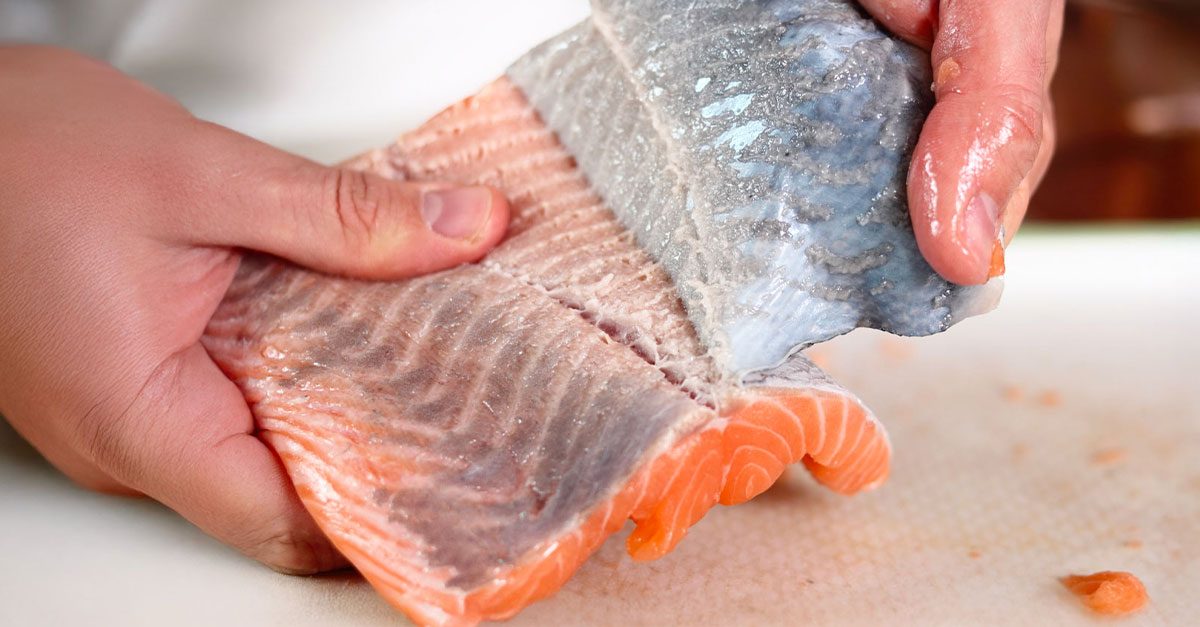;)
In recent times, there's been a growing awareness about the implications of our food choices, not just on our health but also on the environment. This consciousness extends prominently to seafood, prompting us to reconsider the origins and impacts of the fish on our plates. Sustainable fishing practices and ethical treatment of marine life are crucial in preserving ocean ecosystems and ensuring the long-term availability of seafood. As part of this sustainable journey, identifying and avoiding certain types of fish has become imperative. Here are fifteen fish that are best left out of your shopping cart, along with the reasons why and suggestions for more sustainable alternatives.
1. King Mackerel

This large fish accumulates high mercury levels due to its long lifespan and high position in the food chain. Atlantic mackerel is smaller, matures faster, and feeds on plankton, resulting in significantly lower mercury levels. It's also more sustainably managed in most fisheries.
2. Shark

Sharks, being apex predators, accumulate mercury and other toxins. Overfishing poses a threat to shark populations and ocean ecosystems. Pole-and-line caught tuna ensures a more selective fishing method, reducing bycatch and supporting healthier oceans.
3. Swordfish

Like shark, swordfish has high mercury content. Its fishing often results in high bycatch, impacting other marine life. Wild-caught Alaskan salmon is a sustainable choice, offering omega-3 fatty acids with lower environmental impact.
4. Orange Roughy

Their lifespan can exceed 100 years, leading to late reproduction and vulnerability to overfishing. High mercury levels are a health concern. Pacific halibut, caught in well-managed Alaskan waters, provides a healthier, more sustainable white fish option.
5. European Eel

Facing critical endangerment due to habitat destruction and overfishing. Also concerns over illegal trade. American eel is considered a better choice, though still with some sustainability concerns. Best consumed in moderation.
6. Imported Shrimp

Farming practices in some countries contribute to pollution and the destruction of vital mangrove forests. Look for U.S. farmed shrimp or wild-caught from regions with strict environmental regulations.
7. Atlantic Cod

Once abundant, now severely depleted due to overfishing. Recovery efforts are in place but have yet to restore populations fully. Pacific cod from Alaska‘s well-managed fisheries is a more sustainable and abundant option.
8. Chilean Sea Bass

Also known as Patagonian toothfish, this species has been overfished, with illegal, unreported, and unregulated (IUU) fishing exacerbating the issue. U.S. farmed striped bass offers a similar texture and flavor profile without the environmental baggage.
9. Grouper

Overfishing and susceptibility to disease due to their slow growth and late maturity. High levels of contaminants in some regions. U.S. farmed catfish are raised in controlled environments, ensuring lower levels of contaminants and sustainable practices.
10. Bluefin Tuna

Highly prized for sushi, bluefin tuna populations have plummeted. Fishing pressures remain high despite conservation efforts. Skipjack tuna, used in canned light tuna, is more resilient to fishing pressures and is often caught using more sustainable methods.
11. Farmed Salmon

Farming practices can lead to pollution, disease, and parasitic transfer to wild salmon populations. Concerns over feed sustainability. Wild-caught Alaskan salmon is subject to strict sustainability standards, ensuring minimal impact on the environment.
12. Tilapia from China

Farming conditions can be poor, leading to disease and environmental pollution. The use of chemicals and antibiotics is also a concern. U.S. farmed tilapia is raised under stricter environmental and health standards, making it a safer choice.
13. Imported Catfish

Similar to tilapia, concerns include the use of banned substances and the environmental impact of farming practices. U.S. farmed catfish benefits from stringent health and safety regulations, offering a cleaner and more ethical option.
14. Beluga Sturgeon Caviar

Overfishing for caviar has driven beluga sturgeon to the brink of extinction. Illegal trade is a significant issue. Farmed caviar, such as from white sturgeon, offers a sustainable luxury without endangering wild populations.
15. Tilefish

Particularly those from the Gulf of Mexico, tilefish accumulate mercury levels hazardous to health. Anchovies are a low-mercury alternative, rich in omega-3 fatty acids, and harvested with minimal environmental impact.
;Resize,width=712;)
;Resize,width=712;)

;Resize,width=767;)
